
Physics Intro or Basics of Sound Waves YouTube
Sound is a form of energy that transfers through particles of matter as compression waves.Sound waves are longitudinal mechanical waves that oscillate in the direction the wave is traveling.
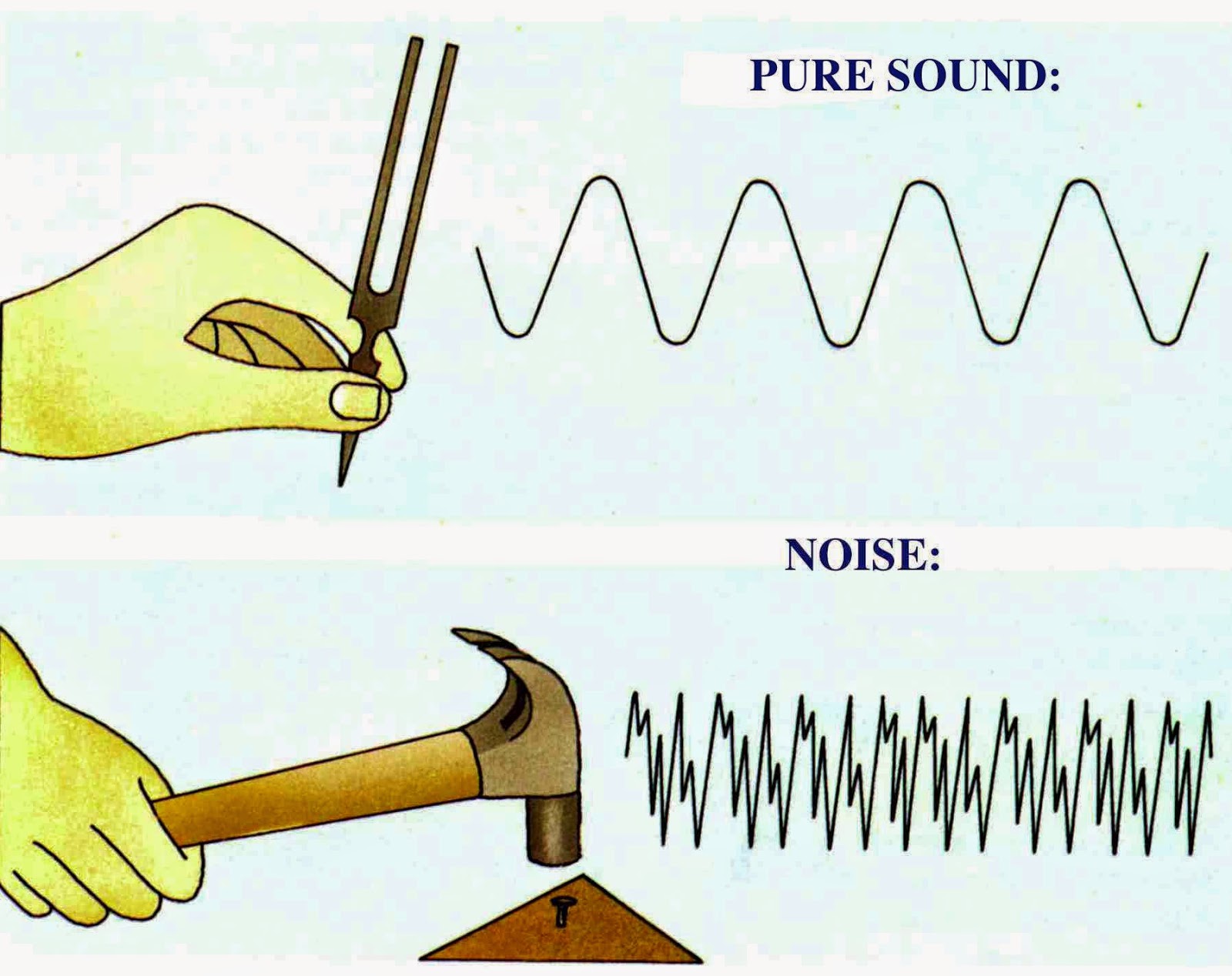
Science online How can the human ear differentiate between the sounds
Sound is a longitudinal, mechanical wave. Sound can travel through any medium, but it cannot travel through a vacuum. There is no sound in outer space. Sound is a variation in pressure. A region of increased pressure on a sound wave is called a compression (or condensation).
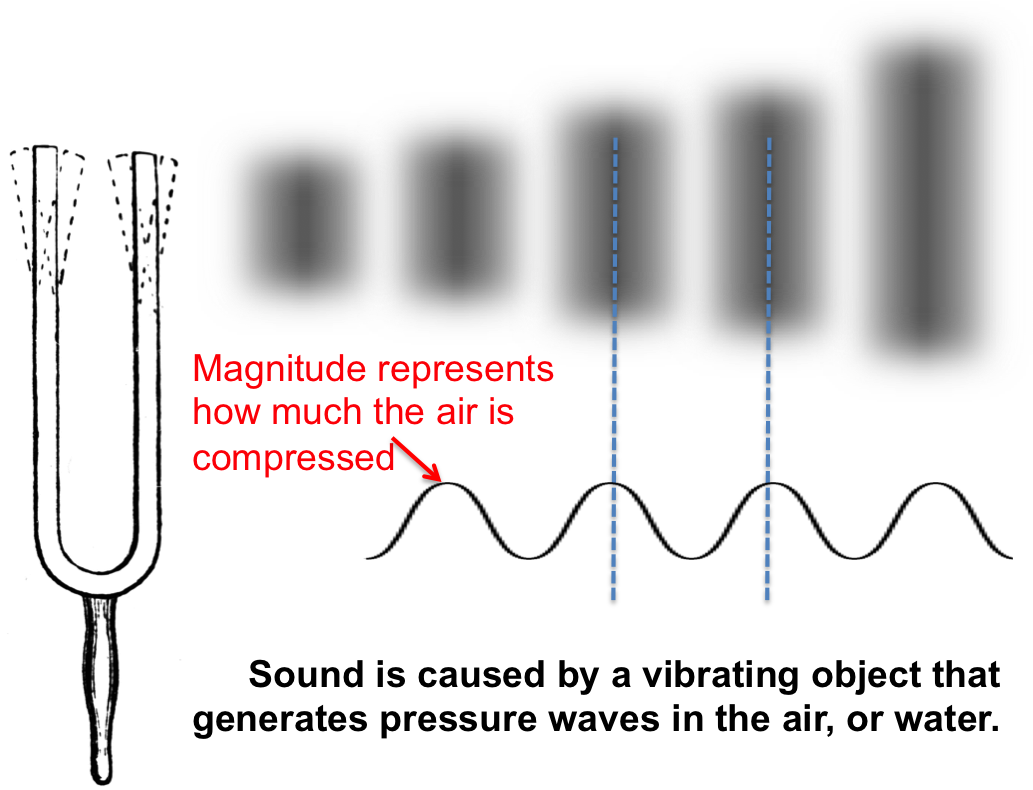
PhysicsWhat is sound?
Sound. Sound is a vibration or disturbance that travel through any medium by transferring energy from one particle to other and can be heard when it reaches a person's or animal's ear. For example when an object vibrates it transfers its energy to the surrounding particles and makes them to vibrate.These particles again collide with the other.
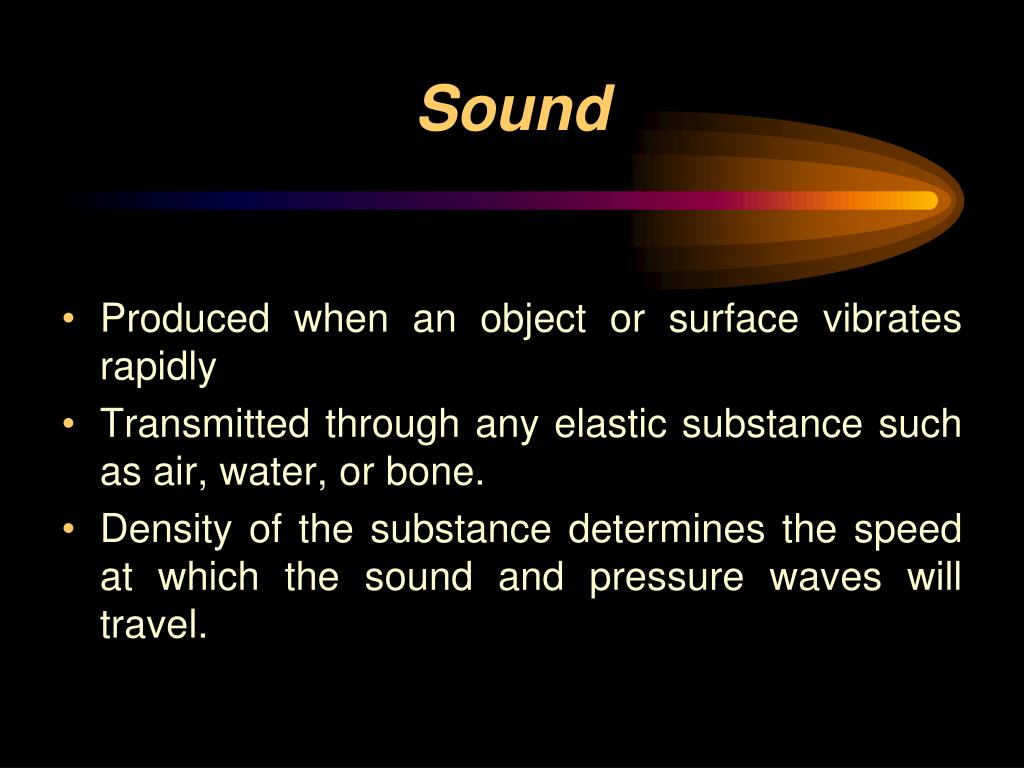
PPT PHYSICS OF SOUND PowerPoint Presentation, free download ID5938395
17.2: Sound Waves. Sound is a disturbance of matter (a pressure wave) that is transmitted from its source outward. Hearing is the perception of sound. Sound can be modeled in terms of pressure or in terms of displacement of molecules. The human ear is sensitive to frequencies between 20 Hz and 20 kHz.

Wavelength of Sound Waves Class 9 Science Notes by Teachoo
17.3: Sound Intensity. Intensity I = P A P A is the same for a sound wave as was defined for all waves, where P is the power crossing area A. The SI unit for I is watts per meter squared. The intensity of a sound wave is also related to the pressure amplitude Δ Δ p: I = (Δp)2 2ρv (17.S.22) (17.S.22) I = ( Δ p) 2 2 ρ v.
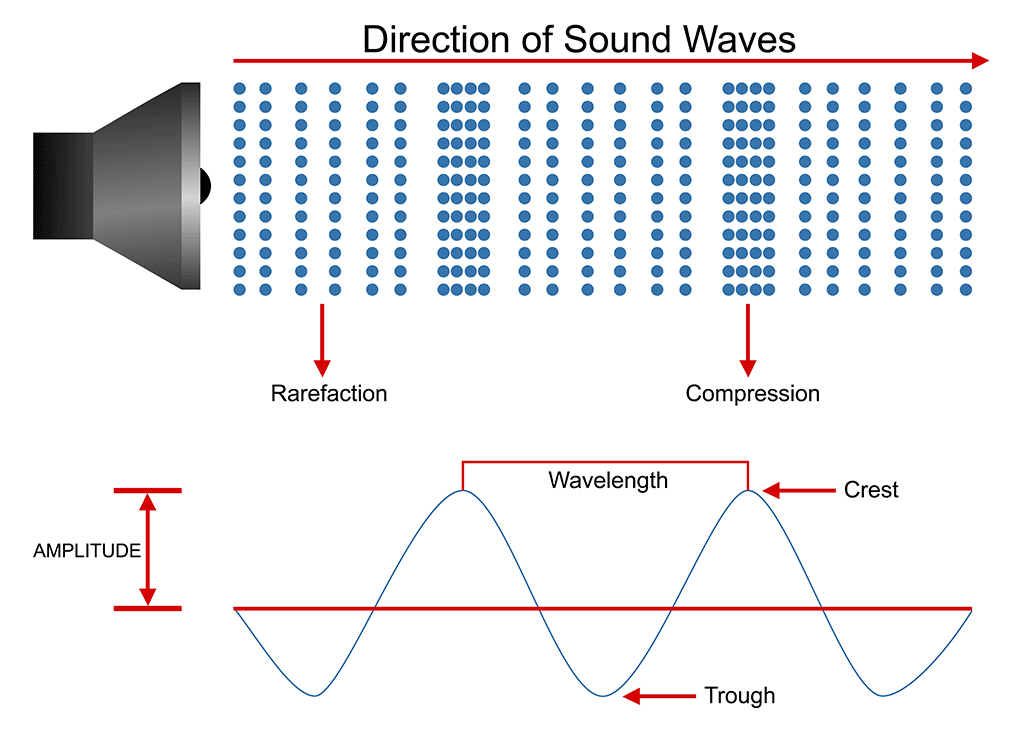
Sound Waves PASCO
Sound will also travel through a solid, but in that case the interactions of the particles are different than in a fluid, and the constant that takes the place of tension is a different one: Young's modulus. But the formula looks the same: vsound in solid = Y ρ−−√ (2.1.2) (2.1.2) v s o u n d i n s o l i d = Y ρ.
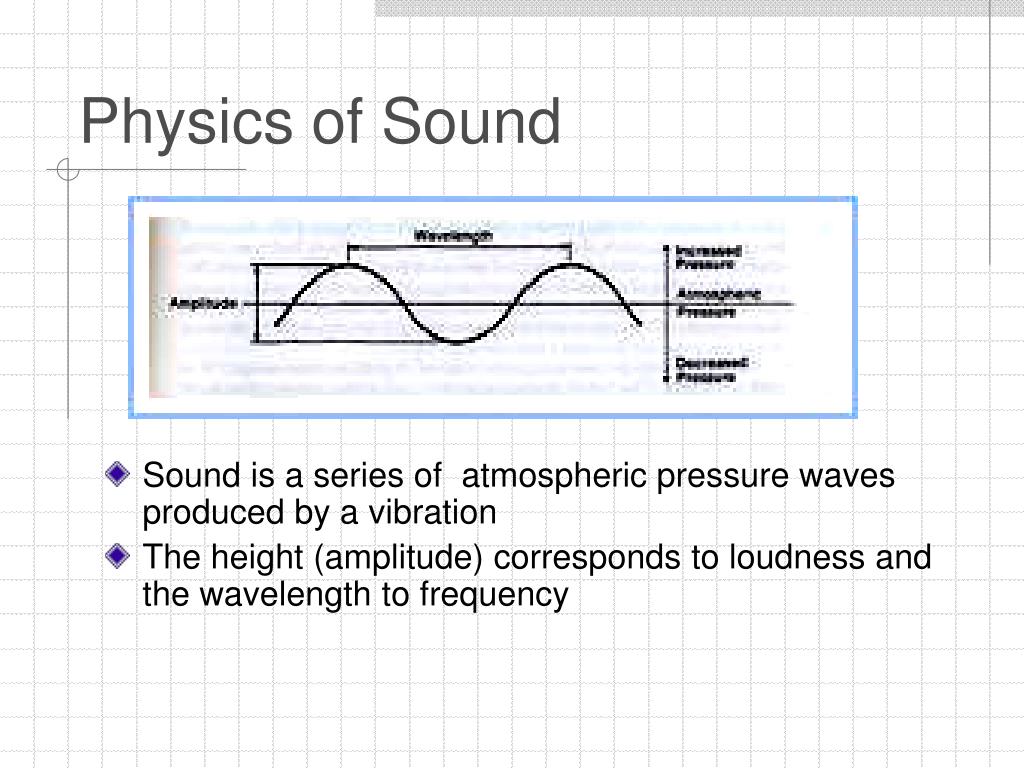
PPT Physics of Sound PowerPoint Presentation, free download ID70345
sound, a mechanical disturbance from a state of equilibrium that propagates through an elastic material medium.

Loudness Easy Science Physics lessons, Science student, Science facts
Sound Sound. The amplitude and frequency of a sound wave can be examined using a microphone and oscilloscope. By measuring the speed of sound we can apply the wave equation to determine its.
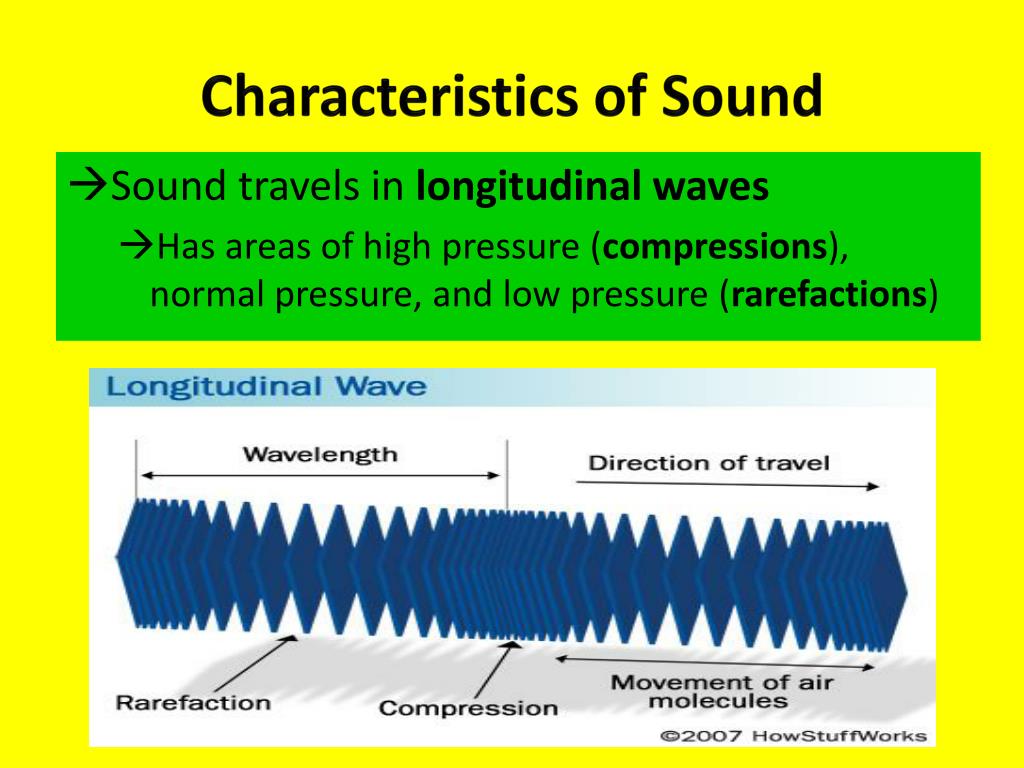
PPT Characteristics of Sound PowerPoint Presentation, free download ID2462093
The period of a sound wave is the time it takes for an air molecule to oscillate back and forth one time. The wavelength of a sound wave is the distance between two compressed regions of air. People get these mixed up because there's an alternate way to create a graph of this sound wave. Consider this.

WhatisSound_1 Leverage Edu
sound, Mechanical disturbance that propagates as a longitudinal wave through a solid, liquid, or gas. A sound wave is generated by a vibrating object. The vibrations cause alternating compressions (regions of crowding) and rarefactions (regions of scarcity) in the particles of the medium. The particles move back and forth in the direction of.
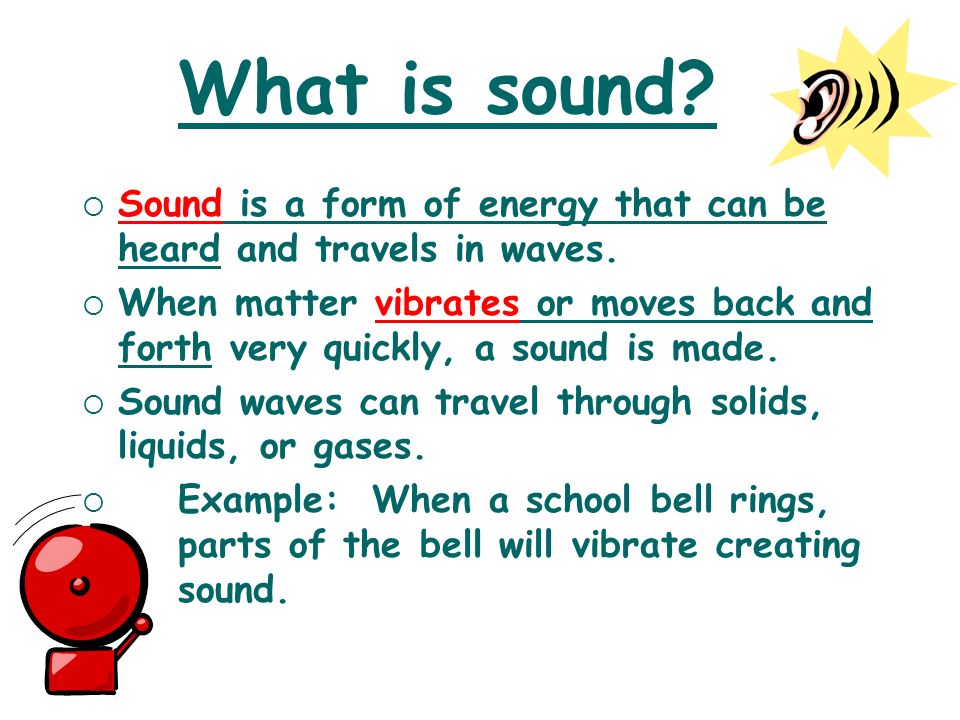
Echoes and Vibrations of Sound ICSE Solutions for Class 10 Physics A Plus Topper
The speed or velocity at which sound travels through a medium is dependent upon the density and the elasticity of the medium. The three important terms that are the basics for understanding the physics of sound are sound pressure, sound power, and sound intensity. Sound pressure is defined as the difference between atmospheric pressure and the.

Loudness, Intensity, Pitch and Quality of Sound Teachoo
Sound is a Pressure Wave Lesson 2 - Sound Properties and Their Perception Pitch and Frequency Intensity and the Decibel Scale The Speed of Sound The Human Ear Lesson 3 Behavior of Sound Waves Interference and Beats The Doppler Effect and Shock Waves Boundary Behavior Reflection, Refraction, and Diffraction Lesson 4 - Resonance and Standing Waves
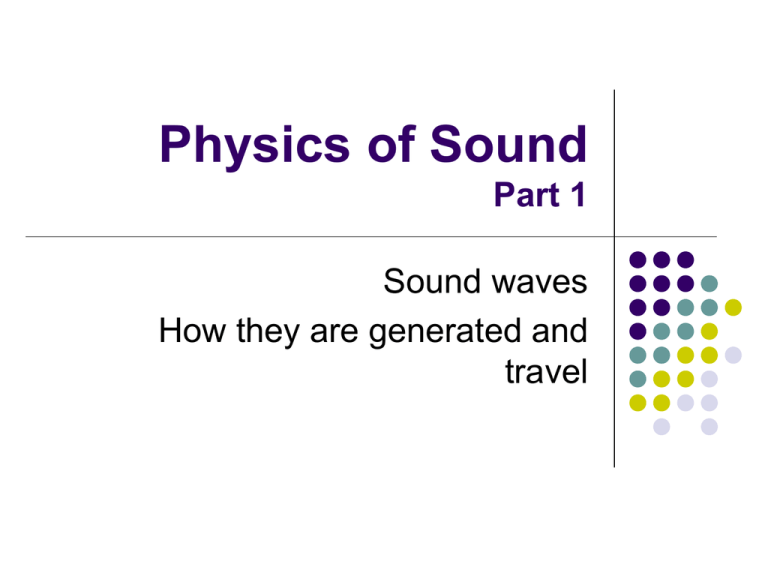
physics of sound
Sound is a type of mechanical wave or an oscillation of matter. A wave is a disturbance that travels from one location to another in a medium. The key here is that the points in the medium oscillate in place while the disturbance itself travels. For example, consider a wave done by a crowd at a ball game.
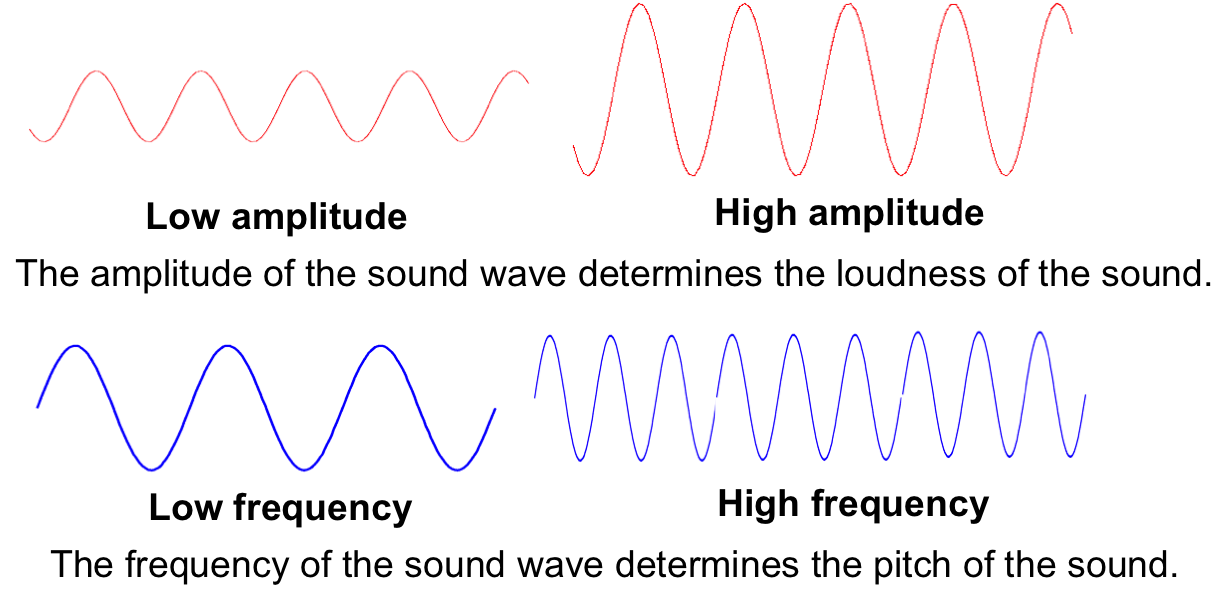
PhysicsWhat is sound?
Sound waves are longitudinal waves. They cause particles to vibrate parallel to the direction of wave travel. The. can travel through solids, liquids or gases. The speed of sound depends on the.
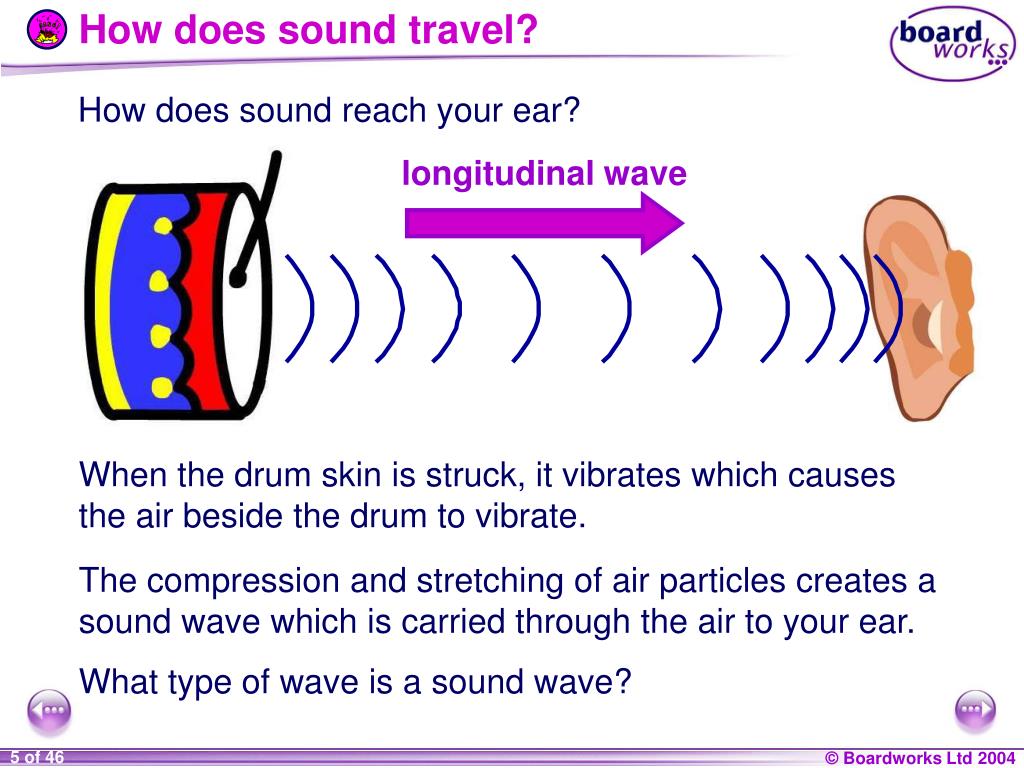
PPT KS4 Physics PowerPoint Presentation, free download ID6014491
A sound is a form of energy, just like electricity, heat or light. Sound is one of the important senses of the human body. Some sounds are pleasant, and some are annoying. We are subjected to various types of sound all time. Sound waves are the result of the vibration of objects. Let's examine some sources of sounds like a bell.

What is Sound Intensity? Physics YouTube
On the atomic scale, sound is a disturbance of atoms that is far more ordered than their thermal motions. In many instances, sound is a periodic wave, and the atoms undergo simple harmonic motion. Thus, sound waves can induce oscillations and resonance effects ( Figure 17.2 ).